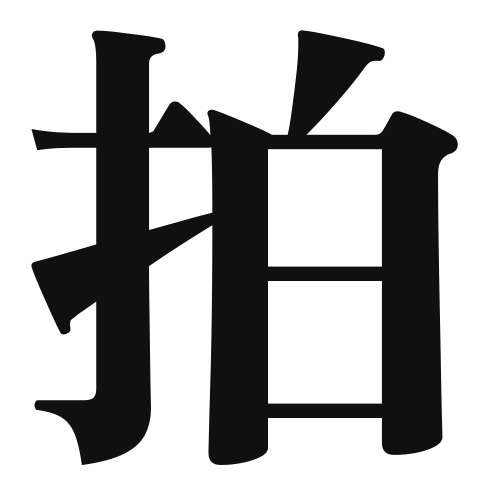1. Overview of Meaning
The kanji “拍” (haku) primarily means “to clap” or “to strike.” It is often associated with actions that involve a rhythmic or striking motion, such as clapping hands or tapping a surface.
2. Formation and Radical
Formation of the Kanji: The kanji “拍” is a phonetic-ideographic character (形声文字). It combines the radical for “hand” (扌) with a phonetic component that suggests its pronunciation.
Radical: The radical of “拍” is 扌, which is related to actions performed by the hand.
3. Examples of Usage
Common Words and Phrases: Some frequently used words that include “拍” are:
- 拍手 (はくしゅ, hakushu) – applause
- 拍子 (ひょうし, hyoushi) – rhythm or tempo
Example Sentences in Daily Conversation:
- コンサートで拍手をしました。
(I clapped at the concert.) - この曲の拍子が好きです。
(I like the rhythm of this song.)
4. Synonyms and Antonyms
Similar Kanji: A similar kanji is “打” (だ, da), which also means “to hit” or “to strike,” but it is more general and can refer to various types of striking actions.
Antonyms: An antonym could be “静” (しず, shizu), meaning “quiet” or “calm,” which contrasts with the action of clapping or striking.
5. Cultural and Historical Background
Relation to Japanese Culture: In Japanese culture, clapping is often associated with celebrations and rituals, such as during New Year’s celebrations or at shrines to show respect.
Proverbs and Idioms: One common expression is “拍手喝采” (はくしゅかっさい, hakushukassai), which means “to applaud enthusiastically,” often used to describe a warm reception for a performance or achievement.
